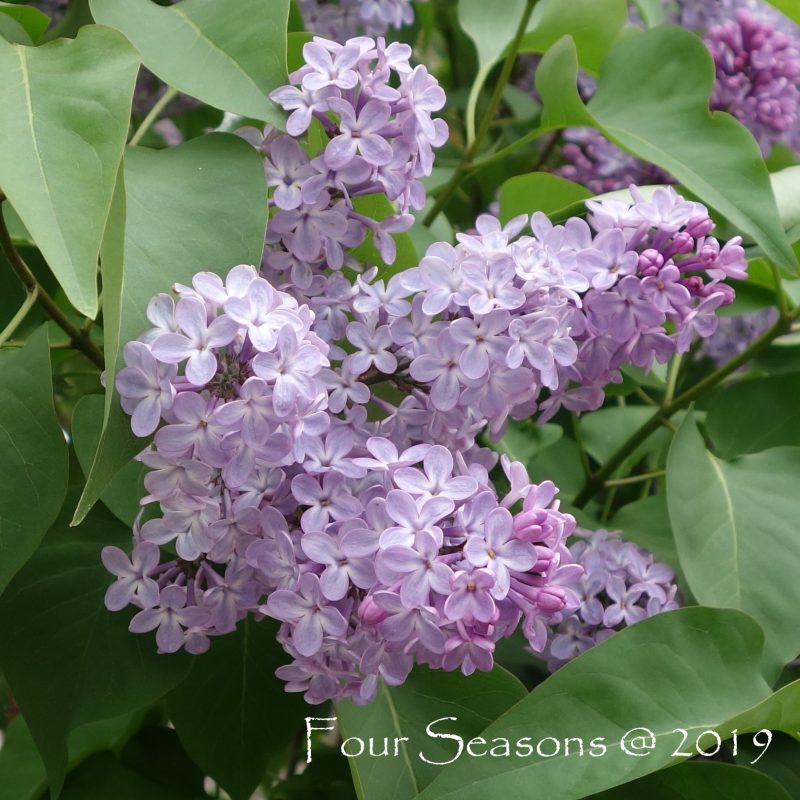Stories are found in the diaries of early settlers about transporting cuttings of lilacs across the rough, unsettled country and then planting them at the door of their newly established homesteads in order to remind them of home. Quite a journey for a plant whose roots originated in Europe and Asia! Hardy in most climates and thriving especially well where there is a significant cold spell in the winter, they have survived both time and geography. Lilacs are fabulous shrubs and the ones in this area are spectacular and fragrant this year thanks to our wet winter.
Lilacs have quite a history. They were known and recorded as long ago as 1562 in Vienna, although some historians put their origins even further back in Bulgaria and Greece. The original word lilac comes from the Arabic laylak or Persian nylac, both meaning blue. It’s one of the ironies of modern language that the current connotation of the word “lilac” is more usually associated with a purple hue, rather than a blue one.
There are many good lilac choices for our area and they can range in height from small to those that will grow very large. The old fashioned lilacs are probably some of the best known and most popular. Available in white and purple, they are fast growing and last a lifetime, often outliving the person who planted it. Varieties like Old Fashioned Purple, Old Fashioned White, and Sensation are all good choices, but which is best for your yard really is a matter of personal preference.
Asian lilacs are especially nice for those who don’t have the space or want the huge shrubs that some can become. Miss Kim is my favorite and I have one in my yard that is so well established that it’s about eight feet tall. It’s obviously an overachiever that outgrew the recommended normal size! I love these because they are lower maintenance than the common lilacs but still produce an abundance of fragrant, lovely blooms on a compact bush.
Lilacs love the alkaline soil which is abundant in this area. They require full sun or at least 6-8 hours a day and may need 2-3 years in order to establish themselves and begin to produce full sized flowers with good color. Fertilize them two to three times per season with a good, general purpose tree and shrub fertilizer to encourage the foliar growth and the flower production. Most lilacs are very hardy and will tolerate winters down to -30 to -40 and in fact, most flower better with a winter chilling period. Like most plants they don’t like wet feet, so be sure to plant them in a well drained area.
You can rejuvenate old lilacs by cutting their large branches back drastically to about 1 foot from the ground, then letting the new ones fill in. This will reduce the flowering for 2-3 years but will result in a much better shaped and healthier plant.
Lilacs live forever if cared for properly, so be sure to plant yours in a place where future generations will enjoy their color and fragrance. Just like antique roses, you’ll find old lilac bushes in ghost towns all over the West as testaments to those who came before and planted them from carefully tended and transported cuttings. Enjoy and share your lilac harvest- they are such prolific bloomers that this year that there are plenty to go around!

